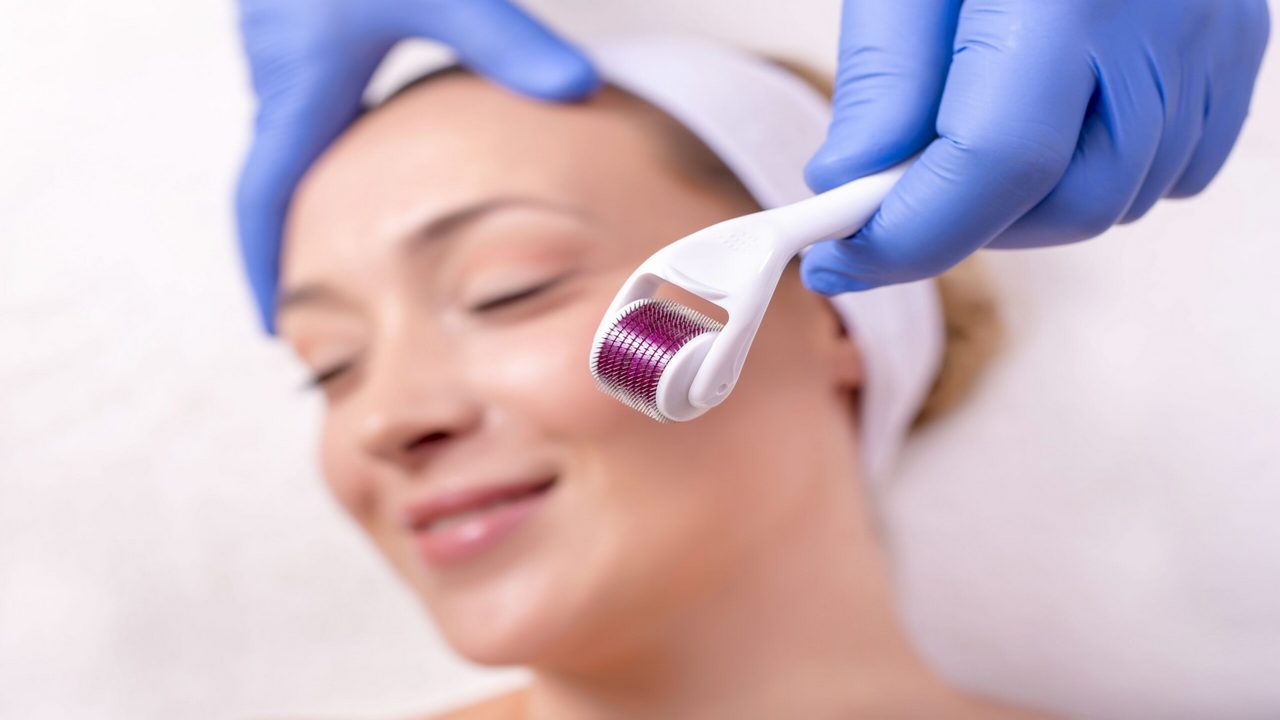Introduction to Derma Roller
Ever wondered how celebrities can have such perfect and youthful skin?Well, here is one of their arsenal tools: derma roller. This compact, powerful skincare device is transforming the at-home skincare routine, and it may be what you have been looking to add to your routine.

Understanding the Derma Roller Tool
Components of a Derma Roller
A derma roller is a hand held device with a cylindrical cylinder with small needles. These micro-needles create small holes in the skin and they activate the natural healing cycle of the skin.
Needle Sizes and Their Uses
Needle sizes vary:
- 0.25 mm: Enhances product absorption
- 0.5 mm: Treats light scarring and pigmentation
- 0 mm – 1.5 mm: Reduces deep wrinkles and acne scars
Materials Used
Derma rollers are usually made of titanium or stainless steel of surgical grade, hence their durability and their hygienic property.
Why Derma Roller is Gaining Popularity
The Science Behind Microneedling
Microneedling creates small, controlled micro-wounds that stimulate the body to produce collagen and elastin- important proteins that make your skin firm, smooth, and youthful
Benefits of Using a Derma Roller
- Minimises wrinkle lines and acne scars
- Minimizes pores
- Increases skin glow
- Increases product absorption
Natural Collagen Boost
It’s like fooling your skin into fixing itself—no chemicals. No lasers.
How to Use a Derma Roller at Home
Step-by-Step Application Guide
- Wash your face well
- Clean the roller with alcohol
- Push lightly in vertical, horizontal and diagonal directions
- Apply nourishing serum(such as hyaluronic acid)
- Moisturize and calm down
Pre-Treatment Care
Do not use acids or scrubs. Make your skin completely dry and clean.
Post-Treatment Tips
A few hours of redness to be expected. Moisturize skin and stay out of the sun.
Choosing the Right Derma Roller
Factors to Consider
- Needle length
- Handle comfort
- Brand reputation
Best Needle Length for Beginners
0.25 mm to 0.5 mm is good if you are a beginner. You can build up as you get used to it on your skin.
How Often to Use It
- 0.25 mm: 2–3 times a week
- 0.5 mm: Once a week
- 0 mm+: Once every 3–4 weeks
Common Skin Issues Treated with Derma Rolling
Acne Scars
The derma rolling is helping break down the scar tissue and promotes even skin texture.
Fine Lines and Wrinkles
Stimulates collagen generation, assisting in removing the fine lines and provide a more plump and younger look to the skin
Hyperpigmentation
The regular application will help lighten dark spots and aid in an even skin tone.
Side Effects and Precautions
When Not to Use a Derma Roller
Avoid where you have
- Active acne
- Eczema or psoriasis
- Skin infections
How to Avoid Infections
Always clean and sterilize roller after and before use.
Safe Storage and Hygiene
Put the roller in a clean, disinfected container, securely closed to exposure to dust and moisture.
DIY vs. Professional Derma Rolling
Cost Comparison
- DIY roller: $20–$50
- Professional session: $100–$300 per visit
Risk and Reward Differences
The professionals provide accuracy and security; the do-it-yourself provides flexibility and saves money.
When to Choose a Dermatologist
In case of deep scars or serious problems, seek dermatologist.
Professional Microneedling Treatments
How Clinical Procedures Differ
Professionals use motor driven pens and longer needles, in a sterile environment.
What to Expect in a Session
Cleanse -> Numb -> Microneedle -> application of serums -> Post care instructions
Expected Results and Timelines
Noticeable results after 3- 4 treatments spaced at roughly a month apart.
Myths and Facts About Derma Rolling
Does It Hurt?
It causes mild pain, which is however, unbearable. The feeling has been likened to a slight prickly or tingley feeling on the skin.
Can It Damage Your Skin?
Not when duly used! The problem can be caused by use of overused or dirty tools
Recommended Products to Use with Derma Roller
Best Serums Post-Treatment
- Hyaluronic acid for hydration
- Vitamin C for brightening
- Peptides for anti-aging
Ingredients to Avoid
- Retinol
- AHAs and BHAs
- Fragrance-heavy products
Real-Life Results and Testimonials
Before and After Effects
In 4-6 weeks, most users notice that their skin is smoother, there is less scarring, and they have a healthy glow.
User Experiences
I never thought a small roller could do that for my skin-but it has!!
Conclusion
Derma roller is not a fad. It is an effective device that works in harnessing the self-healing ability of the skin. No matter your skin wish-list, this pocket-sized device can take care of it. Simply be patient, consistent and above everything hygiene must be the priority.
FAQs
Daily use is harmful to your skin. Use recommended frequency by length of needles.
Absolutely not. It is a personal device and must never be shared because of infection.
On average 4-6 weeks, but will vary according to regularity and skin type.
At least 24 hours avoid applying makeup to avoid irritation and infection.
Hyaluronic acid stands as a favorite one- it moisturizes and does not irritate the skin.